1 of 23
Downloaded 12 times


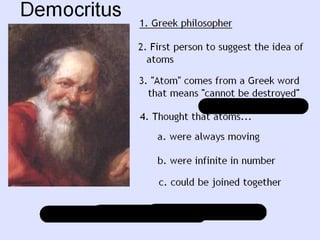
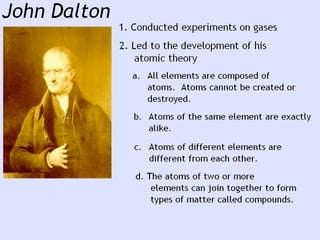
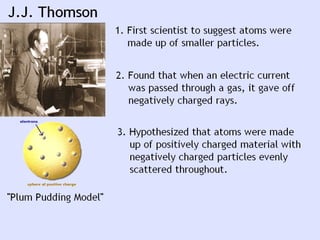

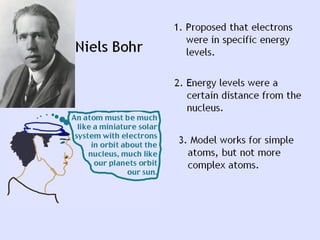
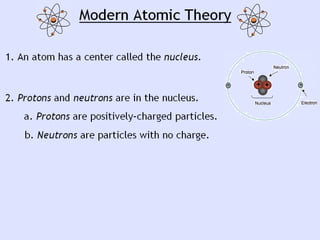
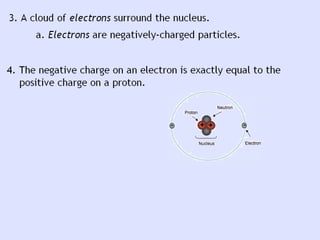

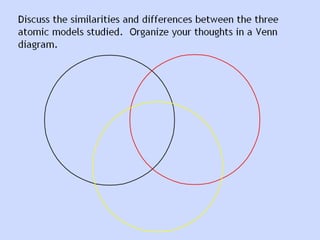

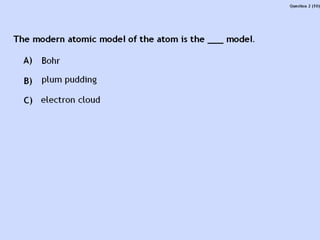
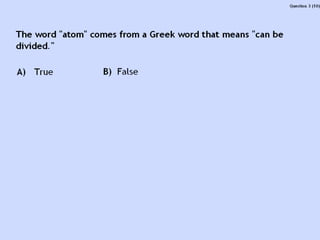
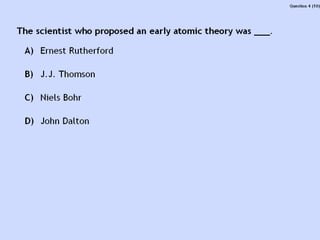

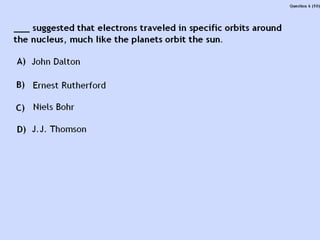
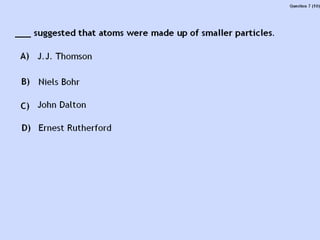
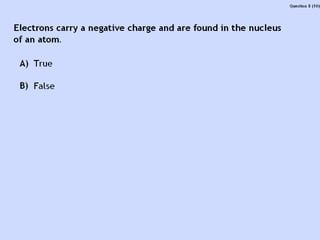
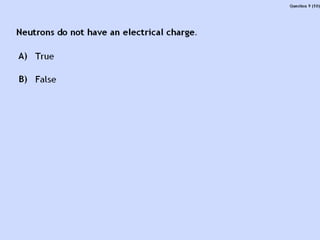
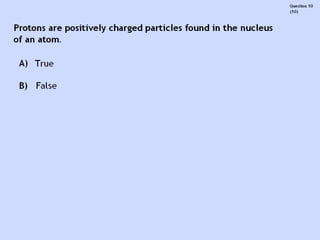
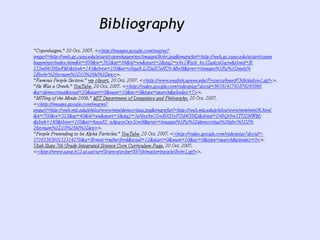

Ad
Recommended
Evidence... notes
Evidence... notesSells Middle School
╠²
1. Alfred Wegener first proposed the theory of continental drift in 1912, suggesting that the continents were once joined together in a supercontinent called Pangaea and have since moved to their current locations.
2. Evidence such as matching rock formations and fossil distributions across continents supports continental drift. Fossils of the same plants and animals have been found on separated continents.
3. The theory of plate tectonics emerged in the 1950s with the discovery of seafloor spreading at ocean ridges, where new crust is formed and plates move apart, providing a mechanism for continental drift.Topomaps
TopomapsSells Middle School
╠²
Contour lines on a topographic map connect points of equal elevation, so that walking along a contour line would not result in gaining or losing altitude. Multiple contour lines at increasing elevations can be used to depict changes in landscape and indicate elevations at specific points. While points directly on contour lines allow determining the precise elevation, points between lines require estimating elevation based on the contour interval and relative position between lines. Topographic maps convey detailed terrain information through the use of contour lines.Periodic table
Periodic tableSells Middle School
╠²
The document summarizes key concepts about the periodic table of elements, including how it organizes the 118 known elements according to their atomic structure and properties. Elements are classified into families based on their valence electrons and include metals, non-metals, metalloids and noble gases. The periodic table provides a way to predict an element's properties and reactivity.Atoms bonding
Atoms bondingSells Middle School
╠²
This document is a guided reading worksheet about atoms, bonding, and the periodic table. It contains questions about key terms like valence electrons, chemical bonds, atomic number, and groups on the periodic table. Students are asked to define terms and answer questions that help them understand how the structure of the periodic table relates to the reactivity and bonding abilities of different elements.Chemical reactions
Chemical reactionsSells Middle School
╠²
This document provides information about chemical reactions for an 8th grade science class. It includes definitions of different types of chemical reactions such as synthesis, decomposition, single replacement, and double replacement. Students are asked to watch a movie about chemical reactions and complete a chart identifying the type of each reaction. They are then given several chemical equations and asked to identify the type of reaction by circling common atoms/compounds and using a code.The science behind the fun of mentos
The science behind the fun of mentosSells Middle School
╠²
This document summarizes the science behind the popular reaction that occurs when Mentos candies are dropped into Diet Coke, causing it to foam and erupt. It explains that in the late 1990s, a retired chemistry teacher first performed the experiment on television using LifeSavers candies. In 2005, a news anchor was soaked during a demonstration using Mentos, and the video of this went viral after being posted online. The document then discusses two theories for the reaction: 1) Mentos' bumpy surface provides nucleation sites for carbon dioxide bubbles to form; and 2) pressure release inside the bottle allows more carbonic acid to convert to carbon dioxide and water, creating more gas.Evidence... notes
Evidence... notesSells Middle School
╠²
1) Alfred Wegener first proposed the theory of continental drift in 1912, suggesting that the continents were once joined together in a supercontinent called Pangaea and have since drifted apart.
2) Evidence supporting continental drift includes matching rock formations and fossil records found across separated continents, as well as similar fossils of tropical plants found in arctic regions, indicating past warmer climates.
3) The theory of plate tectonics emerged as scientists discovered that the ocean floors are formed through sea floor spreading at mid-ocean ridges, with the youngest rocks found at the ridges and increasing in age further away. This supported Wegener's theory that continents have moved over time.Plate boundaries
Plate boundariesSells Middle School
╠²
Divergent boundaries occur where tectonic plates are moving apart and new oceanic crust is created through seafloor spreading, such as at mid-ocean ridges like the Mid-Atlantic Ridge. As the plates move away from the ridge, volcanoes occur in places like Iceland. Convergent boundaries exist where one plate subducts under another, such as the Nazca Plate subducting under the South American Plate to form the Andes Mountains. Continent-continent collisions, like India colliding with Asia 50 million years ago, result in mountain building to form the Himalayas. Transform boundaries, such as the San Andreas Fault, occur where plates slide past each other.Plate Boundaries -Quick view
Plate Boundaries -Quick viewSells Middle School
╠²
A fault is a crack in the Earth's crust formed by an earthquake. There are three main types of faults: normal faults occur when the land pulls apart and one side slides under the other; reverse faults happen when the land pushes together and one side overlaps the other; strike-slip faults involve two pieces of land sliding past each other in opposite directions with one side moving up and the other down.What is Topography
What is TopographySells Middle School
╠²
This document provides an overview of the early history and development of the theory of plate tectonics. It discusses how early maps from Eratosthenes and Crates began to document topography and elevation patterns on Earth. In the late 1800s, scientists like Alexander von Humboldt, Antonio Snider-Pellegrini, and Edward Seuss began recognizing patterns in the shapes and fossil records of continents that suggested they were once joined together. In the early 1900s, scientists like Frank Taylor and Alfred Wegener proposed the first hypotheses of continental drift to explain these patterns, though Wegener's ideas faced skepticism at the time due to the unknown forces driving plate motions.What are waves
What are wavesSells Middle School
╠²
Waves transfer energy from one place to another through a disturbance or vibration in a medium. There are different types of waves including transverse waves, longitudinal waves, and surface waves which move media in different directions relative to the wave propagation. Waves are classified based on how the medium moves as the wave passes through.Checking... wave quest
Checking... wave questSells Middle School
╠²
A wave is a disturbance that travels through a medium from one location to another, transferring energy but not matter. There are two main types of waves - transverse waves, where the disturbance moves perpendicular to the direction of energy transfer, and longitudinal waves, where the disturbance moves parallel. Sound is an example of a longitudinal wave, as it requires a medium like air or water to travel through and compresses and expands the particles of the medium as it moves.What is genetics
What is geneticsSells Middle School
╠²
The document discusses genetics and heredity. It explains that genetics is the study of heredity and how traits are passed from parents to offspring through genes. It provides details on cells, DNA, chromosomes, genes, dominant and recessive traits, and how Gregor Mendel's experiments with pea plants laid the foundations for understanding genetics and heredity.Spectrum
SpectrumSells Middle School
╠²
The document discusses the electromagnetic spectrum and properties of electromagnetic waves. It notes that the electromagnetic spectrum includes radio waves with the longest wavelengths and gamma rays with the shortest wavelengths. While human eyes can only see visible light, the full spectrum also includes infrared, microwaves, ultraviolet, X-rays and gamma rays, all of which are forms of electromagnetic radiation that differ in their wavelengths.Energy forms and_changes
Energy forms and_changesSells Middle School
╠²
This document discusses different forms of energy including heat, chemical, electromagnetic, nuclear, and mechanical energy. It describes how energy can change forms through various conversions, such as chemical energy being converted to heat and motion in engines. It also discusses the differences between potential and kinetic energy, and how gravitational potential energy depends on mass and height. The document stresses that energy cannot be created or destroyed, only changed from one form to another, in line with the law of conservation of energy.Energy
EnergySells Middle School
╠²
Energy is the ability to do work or cause change. It exists in various forms including kinetic energy, which is the energy of moving objects, and potential energy, which is stored energy. Kinetic energy is calculated as one-half mass times velocity squared, while gravitational potential energy is calculated as mass times height times gravity. Energy cannot be created or destroyed, only changed from one form to another. For example, as a roller coaster rises, its potential energy increases and kinetic energy decreases, then vice versa as it descends. The total energy remains the same as it is transferred between kinetic and potential forms throughout the ride.Light rays
Light raysSells Middle School
╠²
The document discusses the reflection and refraction of light, including how lenses and mirrors form images. It describes how lenses can form real or virtual images and how ray diagrams illustrate this. It also discusses how optical systems use multiple lenses or mirrors to form images and the factors that determine image properties such as location, type, and sharpness.The Life Of A Star
The Life Of A StarSells Middle School
╠²
1. Stars form from clouds of gas and dust that collapse under gravity, generating heat through nuclear fusion reactions in their cores.
2. As stars age, they expand into red giants and burn helium through fusion, then collapse into white dwarfs as they run out of fuel.
3. More massive stars end their lives in supernova explosions, leaving behind neutron stars or black holes depending on the star's mass. Black holes form from the most massive stars and absorb everything, even light.Out Of This World
Out Of This WorldSells Middle School
╠²
The document provides an overview of the universe and some of its key components:
1. The universe originated from the Big Bang around 13.7 billion years ago and has been expanding and cooling ever since.
2. Galaxies form the basic building blocks of the universe and come in three main types: spiral, elliptical, and irregular. Our galaxy is the Milky Way galaxy.
3. Stars are born in nebulae and come in different colors, temperatures, and magnitudes depending on their stage of life. When stars die, they may become black holes, neutron stars, or white dwarfs.Momentum
MomentumSells Middle School
╠²
The document discusses momentum, including its definition as mass times velocity. It provides examples of calculating momentum for objects with given mass and velocity values. It also covers the law of conservation of momentum, stating that the total momentum in a system remains constant unless an outside force acts on it. Examples are given of applying the law to calculate velocities after collisions between objects.Big Bang
Big BangSells Middle School
╠²
The document discusses evidence that supports the Big Bang theory of the origin and expansion of the universe. It explains that background radiation from the early universe, the observation of galaxies moving away from Earth, and a temperature of about 3 degrees above absolute zero provide observational evidence for the Big Bang. It also outlines two possible futures for the universe - either continuing to expand indefinitely or eventually collapsing back on itself and undergoing another Big Bang.Forces1
Forces1Sells Middle School
╠²
This document defines key concepts related to motion including motion, reference point, frame of reference, speed, force, balanced forces, and unbalanced forces. Motion is defined as an object changing position over time compared to a reference point. Speed is the distance an object travels due to force over time. Balanced forces are equal and opposite forces resulting in no net force and no change in motion, while unbalanced forces are unequal forces resulting in a net force and change in speed or direction.Forces Concept1
Forces Concept1Sells Middle School
╠²
Mac was a soccer ball sitting still on the grass, being acted on by three balanced forces - air pressure, gravity, and the ground pushing up. A kid kicked Mac, providing an unbalanced force that caused him to move. As Mac flew through the air, two unbalanced forces - friction and gravity - acted on him to slow him down until coming to rest again under the influence of the original three balanced forces.The Seasons
The SeasonsSells Middle School
╠²
The document discusses various aspects of the Earth's rotation, revolution, and tilt, and how these factors cause the seasons. It explains that the seasons are due to the tilt of the Earth's axis, not our distance from the Sun. When the northern hemisphere tilts toward the Sun, it receives more direct sunlight, causing summer.Solar system Notes
Solar system NotesSells Middle School
╠²
The solar system consists of planets, moons, asteroids and comets that orbit the Sun. There are eight major planets - Mercury, Venus, Earth, Mars, Jupiter, Saturn, Uranus and Neptune. Pluto is now classified as a dwarf planet. The inner planets are small and rocky, while the outer planets are large and gaseous. The planets are surrounded by smaller objects like moons, asteroids and comets.Genetic Mutations
Genetic MutationsSells Middle School
╠²
Genetic mutations can be harmful, neutral, or beneficial. Harmful mutations cause disorders like Down syndrome, Turner syndrome, and Klinefelter syndrome. Neutral mutations have little effect, while beneficial mutations provide advantages like resistance to diseases or environmental pressures. For example, the sickle cell mutation protects against malaria despite causing anemia. Mutations are an important source of genetic variation and fuel for evolution.What is Genetics
What is GeneticsSells Middle School
╠²
The document discusses genetics and heredity. It defines genetics as the study of heredity and how traits are passed from parents to offspring through genes. It explains that genes are found within cells, and specifically within the nucleus of cells in the form of DNA on chromosomes. The document outlines Gregor Mendel's experiments with pea plants that helped establish the basic principles of genetics including dominant and recessive traits, inheritance of traits from parents, and more.DNA
DNASells Middle School
╠²
DNA is found in the nucleus of cells and carries the genetic code for building organisms. It consists of two strands of nucleotides in a double helix structure, with sugars, phosphates, and nitrogen bases pairing up between the strands via hydrogen bonds. Watson and Crick discovered that DNA has a double helix structure in 1953, with nucleotides containing one of four nitrogen bases - adenine, guanine, cytosine, or thymine - that pair specifically between the strands in the sequence A-T and G-C.GEOGRAPHY-Study Material [ Class 10th] .pdf
GEOGRAPHY-Study Material [ Class 10th] .pdfSHERAZ AHMAD LONE
╠²
"Geography Study Material for Class 10th" provides a comprehensive and easy-to-understand resource for key topics like Resources & Development, Water Resources, Agriculture, Minerals & Energy, Manufacturing Industries, and Lifelines of the National Economy. Designed as per the latest NCERT/JKBOSE syllabus, it includes notes, maps, diagrams, and MODEL question Paper to help students excel in exams. Whether revising for exams or strengthening conceptual clarity, this material ensures effective learning and high scores. Perfect for last-minute revisions and structured study sessions.More Related Content
More from Sells Middle School (20)
Plate Boundaries -Quick view
Plate Boundaries -Quick viewSells Middle School
╠²
A fault is a crack in the Earth's crust formed by an earthquake. There are three main types of faults: normal faults occur when the land pulls apart and one side slides under the other; reverse faults happen when the land pushes together and one side overlaps the other; strike-slip faults involve two pieces of land sliding past each other in opposite directions with one side moving up and the other down.What is Topography
What is TopographySells Middle School
╠²
This document provides an overview of the early history and development of the theory of plate tectonics. It discusses how early maps from Eratosthenes and Crates began to document topography and elevation patterns on Earth. In the late 1800s, scientists like Alexander von Humboldt, Antonio Snider-Pellegrini, and Edward Seuss began recognizing patterns in the shapes and fossil records of continents that suggested they were once joined together. In the early 1900s, scientists like Frank Taylor and Alfred Wegener proposed the first hypotheses of continental drift to explain these patterns, though Wegener's ideas faced skepticism at the time due to the unknown forces driving plate motions.What are waves
What are wavesSells Middle School
╠²
Waves transfer energy from one place to another through a disturbance or vibration in a medium. There are different types of waves including transverse waves, longitudinal waves, and surface waves which move media in different directions relative to the wave propagation. Waves are classified based on how the medium moves as the wave passes through.Checking... wave quest
Checking... wave questSells Middle School
╠²
A wave is a disturbance that travels through a medium from one location to another, transferring energy but not matter. There are two main types of waves - transverse waves, where the disturbance moves perpendicular to the direction of energy transfer, and longitudinal waves, where the disturbance moves parallel. Sound is an example of a longitudinal wave, as it requires a medium like air or water to travel through and compresses and expands the particles of the medium as it moves.What is genetics
What is geneticsSells Middle School
╠²
The document discusses genetics and heredity. It explains that genetics is the study of heredity and how traits are passed from parents to offspring through genes. It provides details on cells, DNA, chromosomes, genes, dominant and recessive traits, and how Gregor Mendel's experiments with pea plants laid the foundations for understanding genetics and heredity.Spectrum
SpectrumSells Middle School
╠²
The document discusses the electromagnetic spectrum and properties of electromagnetic waves. It notes that the electromagnetic spectrum includes radio waves with the longest wavelengths and gamma rays with the shortest wavelengths. While human eyes can only see visible light, the full spectrum also includes infrared, microwaves, ultraviolet, X-rays and gamma rays, all of which are forms of electromagnetic radiation that differ in their wavelengths.Energy forms and_changes
Energy forms and_changesSells Middle School
╠²
This document discusses different forms of energy including heat, chemical, electromagnetic, nuclear, and mechanical energy. It describes how energy can change forms through various conversions, such as chemical energy being converted to heat and motion in engines. It also discusses the differences between potential and kinetic energy, and how gravitational potential energy depends on mass and height. The document stresses that energy cannot be created or destroyed, only changed from one form to another, in line with the law of conservation of energy.Energy
EnergySells Middle School
╠²
Energy is the ability to do work or cause change. It exists in various forms including kinetic energy, which is the energy of moving objects, and potential energy, which is stored energy. Kinetic energy is calculated as one-half mass times velocity squared, while gravitational potential energy is calculated as mass times height times gravity. Energy cannot be created or destroyed, only changed from one form to another. For example, as a roller coaster rises, its potential energy increases and kinetic energy decreases, then vice versa as it descends. The total energy remains the same as it is transferred between kinetic and potential forms throughout the ride.Light rays
Light raysSells Middle School
╠²
The document discusses the reflection and refraction of light, including how lenses and mirrors form images. It describes how lenses can form real or virtual images and how ray diagrams illustrate this. It also discusses how optical systems use multiple lenses or mirrors to form images and the factors that determine image properties such as location, type, and sharpness.The Life Of A Star
The Life Of A StarSells Middle School
╠²
1. Stars form from clouds of gas and dust that collapse under gravity, generating heat through nuclear fusion reactions in their cores.
2. As stars age, they expand into red giants and burn helium through fusion, then collapse into white dwarfs as they run out of fuel.
3. More massive stars end their lives in supernova explosions, leaving behind neutron stars or black holes depending on the star's mass. Black holes form from the most massive stars and absorb everything, even light.Out Of This World
Out Of This WorldSells Middle School
╠²
The document provides an overview of the universe and some of its key components:
1. The universe originated from the Big Bang around 13.7 billion years ago and has been expanding and cooling ever since.
2. Galaxies form the basic building blocks of the universe and come in three main types: spiral, elliptical, and irregular. Our galaxy is the Milky Way galaxy.
3. Stars are born in nebulae and come in different colors, temperatures, and magnitudes depending on their stage of life. When stars die, they may become black holes, neutron stars, or white dwarfs.Momentum
MomentumSells Middle School
╠²
The document discusses momentum, including its definition as mass times velocity. It provides examples of calculating momentum for objects with given mass and velocity values. It also covers the law of conservation of momentum, stating that the total momentum in a system remains constant unless an outside force acts on it. Examples are given of applying the law to calculate velocities after collisions between objects.Big Bang
Big BangSells Middle School
╠²
The document discusses evidence that supports the Big Bang theory of the origin and expansion of the universe. It explains that background radiation from the early universe, the observation of galaxies moving away from Earth, and a temperature of about 3 degrees above absolute zero provide observational evidence for the Big Bang. It also outlines two possible futures for the universe - either continuing to expand indefinitely or eventually collapsing back on itself and undergoing another Big Bang.Forces1
Forces1Sells Middle School
╠²
This document defines key concepts related to motion including motion, reference point, frame of reference, speed, force, balanced forces, and unbalanced forces. Motion is defined as an object changing position over time compared to a reference point. Speed is the distance an object travels due to force over time. Balanced forces are equal and opposite forces resulting in no net force and no change in motion, while unbalanced forces are unequal forces resulting in a net force and change in speed or direction.Forces Concept1
Forces Concept1Sells Middle School
╠²
Mac was a soccer ball sitting still on the grass, being acted on by three balanced forces - air pressure, gravity, and the ground pushing up. A kid kicked Mac, providing an unbalanced force that caused him to move. As Mac flew through the air, two unbalanced forces - friction and gravity - acted on him to slow him down until coming to rest again under the influence of the original three balanced forces.The Seasons
The SeasonsSells Middle School
╠²
The document discusses various aspects of the Earth's rotation, revolution, and tilt, and how these factors cause the seasons. It explains that the seasons are due to the tilt of the Earth's axis, not our distance from the Sun. When the northern hemisphere tilts toward the Sun, it receives more direct sunlight, causing summer.Solar system Notes
Solar system NotesSells Middle School
╠²
The solar system consists of planets, moons, asteroids and comets that orbit the Sun. There are eight major planets - Mercury, Venus, Earth, Mars, Jupiter, Saturn, Uranus and Neptune. Pluto is now classified as a dwarf planet. The inner planets are small and rocky, while the outer planets are large and gaseous. The planets are surrounded by smaller objects like moons, asteroids and comets.Genetic Mutations
Genetic MutationsSells Middle School
╠²
Genetic mutations can be harmful, neutral, or beneficial. Harmful mutations cause disorders like Down syndrome, Turner syndrome, and Klinefelter syndrome. Neutral mutations have little effect, while beneficial mutations provide advantages like resistance to diseases or environmental pressures. For example, the sickle cell mutation protects against malaria despite causing anemia. Mutations are an important source of genetic variation and fuel for evolution.What is Genetics
What is GeneticsSells Middle School
╠²
The document discusses genetics and heredity. It defines genetics as the study of heredity and how traits are passed from parents to offspring through genes. It explains that genes are found within cells, and specifically within the nucleus of cells in the form of DNA on chromosomes. The document outlines Gregor Mendel's experiments with pea plants that helped establish the basic principles of genetics including dominant and recessive traits, inheritance of traits from parents, and more.DNA
DNASells Middle School
╠²
DNA is found in the nucleus of cells and carries the genetic code for building organisms. It consists of two strands of nucleotides in a double helix structure, with sugars, phosphates, and nitrogen bases pairing up between the strands via hydrogen bonds. Watson and Crick discovered that DNA has a double helix structure in 1953, with nucleotides containing one of four nitrogen bases - adenine, guanine, cytosine, or thymine - that pair specifically between the strands in the sequence A-T and G-C.Recently uploaded (20)
GEOGRAPHY-Study Material [ Class 10th] .pdf
GEOGRAPHY-Study Material [ Class 10th] .pdfSHERAZ AHMAD LONE
╠²
"Geography Study Material for Class 10th" provides a comprehensive and easy-to-understand resource for key topics like Resources & Development, Water Resources, Agriculture, Minerals & Energy, Manufacturing Industries, and Lifelines of the National Economy. Designed as per the latest NCERT/JKBOSE syllabus, it includes notes, maps, diagrams, and MODEL question Paper to help students excel in exams. Whether revising for exams or strengthening conceptual clarity, this material ensures effective learning and high scores. Perfect for last-minute revisions and structured study sessions.Overview of Off Boarding in Odoo 18 Employees
Overview of Off Boarding in Odoo 18 EmployeesCeline George
╠²
When an employee leaves the company, Odoo provides a streamlined offboarding process to ensure all necessary steps are taken. Paper 109 | Archetypal Journeys in ŌĆśInterstellarŌĆÖ: Exploring Universal Themes...
Paper 109 | Archetypal Journeys in ŌĆśInterstellarŌĆÖ: Exploring Universal Themes...Rajdeep Bavaliya
╠²
Get ready to embark on a cosmic quest as we unpack the archetypal power behind Christopher NolanŌĆÖs ŌĆśInterstellar.ŌĆÖ Discover how heroŌĆÖs journey tropes, mythic symbols like wormholes and tesseracts, and themes of love, sacrifice, and environmental urgency shape this epic odyssey. Whether youŌĆÖre a film theory buff or a casual viewer, youŌĆÖll learn why CooperŌĆÖs journey resonates with timeless mythsŌĆöand what it means for our own future. Smash that like button, and follow for more deep dives into cinemaŌĆÖs greatest stories!
M.A. Sem - 2 | Presentation
Presentation Season - 2
Paper - 109: Literary Theory & Criticism and Indian Aesthetics
Submitted Date: April 5, 2025
Paper Name: Literary Theory & Criticism and Indian Aesthetics
Topic: Archetypal Journeys in ŌĆśInterstellarŌĆÖ: Exploring Universal Themes in NolanŌĆÖs Cosmic Odyssey
[Please copy the link and paste it into any web browser to access the content.]
Video Link: https://youtu.be/vHLaLZPHumk
For a more in-depth discussion of this presentation, please visit the full blog post at the following link: https://rajdeepbavaliya2.blogspot.com/2025/04/archetypal-journeys-in-interstellar-exploring-universal-themes-in-nolan-s-cosmic-odyssey.html
Please visit this blog to explore additional presentations from this season:
Hashtags:
#ChristopherNolan #Interstellar #NolanFilms #HeroJourney #CosmicOdyssey #FilmTheory #ArchetypalCriticism #SciFiCinema #TimeDilation #EnvironmentalCinema #MythicStorytelling
Keyword Tags:
Interstellar analysis, Christopher Nolan archetypes, heroŌĆÖs journey explained, wormhole symbolism, tesseract meaning, myth in sci-fi, cinematic archetypes, environmental themes film, love across time, Nolan film breakdownPests of Maize: An comprehensive overview.pptx
Pests of Maize: An comprehensive overview.pptxArshad Shaikh
╠²
Maize is susceptible to various pests that can significantly impact yields. Key pests include the fall armyworm, stem borers, cob earworms, shoot fly. These pests can cause extensive damage, from leaf feeding and stalk tunneling to grain destruction. Effective management strategies, such as integrated pest management (IPM), resistant varieties, biological control, and judicious use of chemicals, are essential to mitigate losses and ensure sustainable maize production.Wax Moon, Richmond, VA. Terrence McPherson
Wax Moon, Richmond, VA. Terrence McPhersonTerrenceMcPherson1
╠²
Wax Moon is an independent record store keeping its foundational foothold in vinyl records by taking in collections and keeping the old 80s aesthetics alive with involvement in its community and participation with record distributors.Q1_ENGLISH_PPT_WEEK 1 power point grade 3 Quarter 1 week 1
Q1_ENGLISH_PPT_WEEK 1 power point grade 3 Quarter 1 week 1jutaydeonne
╠²
Grade 3 Quarter 1 Week 1 English part 2Health Care Planning and Organization of Health Care at Various Levels ŌĆō Unit...
Health Care Planning and Organization of Health Care at Various Levels ŌĆō Unit...RAKESH SAJJAN
╠²
This comprehensive PowerPoint presentation is prepared for B.Sc Nursing 5th Semester students and covers Unit 2 of Community Health Nursing ŌĆō I based on the Indian Nursing Council (INC) syllabus. The unit focuses on the planning, structure, and functioning of health care services at various levels in India. It is especially useful for nursing educators and students preparing for university exams, internal assessments, or professional teaching assignments.
The content of this presentation includes:
Historical development of health planning in India
Detailed study of various health committees: Bhore, Mudaliar, Kartar Singh, Shrivastava Committee, etc.
Overview of major health commissions
In-depth understanding of Five-Year Plans and their impact on health care
Community participation and stakeholder involvement in health care planning
Structure of health care delivery system at central, state, district, and peripheral levels
Concepts and implementation of Primary Health Care (PHC) and Sustainable Development Goals (SDGs)
Introduction to Comprehensive Primary Health Care (CPHC) and Health and Wellness Centers (HWCs)
Expanded role of Mid-Level Health Providers (MLHPs) and Community Health Providers (CHPs)
Explanation of national health policies: NHP 1983, 2002, and 2017
Key national missions and schemes including:
National Health Mission (NHM)
National Rural Health Mission (NRHM)
National Urban Health Mission (NUHM)
Ayushman Bharat ŌĆō Pradhan Mantri Jan Arogya Yojana (PM-JAY)
Universal Health Coverage (UHC) and IndiaŌĆÖs commitment to equitable health care
This presentation is ideal for:
Nursing students (B.Sc, GNM, Post Basic)
Nursing tutors and faculty
Health educators
Competitive exam aspirants in nursing and public health
It is organized in a clear, point-wise format with relevant terminologies and a focus on applied knowledge. The slides can also be used for community health demonstrations, teaching sessions, and revision guides.ECONOMICS, DISASTER MANAGEMENT, ROAD SAFETY - STUDY MATERIAL [10TH]
ECONOMICS, DISASTER MANAGEMENT, ROAD SAFETY - STUDY MATERIAL [10TH]SHERAZ AHMAD LONE
╠²
This study material for Class 10th covers the core subjects of Economics, Disaster Management, and Road Safety Education, developed strictly in line with the JKBOSE textbook. It presents the content in a simplified, structured, and student-friendly format, ensuring clarity in concepts. The material includes reframed explanations, flowcharts, infographics, and key point summaries to support better understanding and retention. Designed for classroom teaching and exam preparation, it aims to enhance comprehension, critical thinking, and practical awareness among students.How to Implement Least Package Removal Strategy in Odoo 18 Inventory
How to Implement Least Package Removal Strategy in Odoo 18 InventoryCeline George
╠²
In Odoo, the least package removal strategy is a feature designed to optimize inventory management by minimizing the number of packages open to fulfill the orders. This strategy is particularly useful for the business that deals with products packages in various quantities such as boxes, cartons or palettes. How to Manage Inventory Movement in Odoo 18 POS
How to Manage Inventory Movement in Odoo 18 POSCeline George
╠²
Inventory management in the Odoo 18 Point of Sale system is tightly integrated with the inventory module, offering a solution to businesses to manage sales and stock in one united system.Communicable Diseases and National Health Programs ŌĆō Unit 9 | B.Sc Nursing 5t...
Communicable Diseases and National Health Programs ŌĆō Unit 9 | B.Sc Nursing 5t...RAKESH SAJJAN
╠²
This PowerPoint presentation covers Unit 9 ŌĆō Communicable Diseases and National Health Programs, a core part of the 5th Semester B.Sc Nursing (Community Health Nursing ŌĆō I) syllabus, as outlined by the Indian Nursing Council (INC).
This unit enables nursing students to understand the epidemiology, prevention, control, and nursing management of common communicable diseases in India, while also offering a structured overview of the National Health Programs implemented to address them.
The content is critical for effective field practice, disease surveillance, early detection, referral, and health education, equipping students to participate in public health interventions and outbreak control at community and national levels.
¤ōś Key Topics Covered in the PPT:
Definition and classification of communicable diseases
Modes of transmission and chain of infection
Common communicable diseases in India:
Malaria
Tuberculosis
Leprosy
Dengue
HIV/AIDS
Hepatitis
COVID-19 (if included in the current curriculum)
Diarrheal diseases
Acute Respiratory Infections (ARIs)
Epidemiological factors, causative agents, symptoms, and incubation periods
Prevention and control strategies: primary, secondary, and tertiary levels
Nursing responsibilities in patient care, contact tracing, community surveillance, and outbreak control
Health education and behavior change communication for community awareness
Vaccination schedules and cold chain maintenance
National Health Programs related to communicable diseases:
National Vector Borne Disease Control Program (NVBDCP)
Revised National Tuberculosis Control Program (RNTCP)
National Leprosy Eradication Program (NLEP)
National AIDS Control Program (NACP)
Universal Immunization Program (UIP)
IDSP ŌĆō Integrated Disease Surveillance Program
Overview of standard treatment protocols, referral mechanisms, and community nurseŌĆÖs role in program implementation
This presentation is ideal for:
Nursing students preparing for university exams, class tests, and field projects
Tutors teaching infectious disease nursing and public health interventions
Nurses involved in immunization, outbreak investigation, and contact tracing
It provides a student-friendly breakdown of concepts, aligned with national priorities, including flowcharts, tables, case examples, and simplified text for field-level application.ABCs of Bookkeeping for Nonprofits TechSoup.pdf
ABCs of Bookkeeping for Nonprofits TechSoup.pdfTechSoup
╠²
Accounting can be hard enough if you havenŌĆÖt studied it in school. Nonprofit accounting is actually very different and more challenging still.
Need help? Join Nonprofit CPA and QuickBooks expert Gregg Bossen in this first-time webinar and learn the ABCs of keeping books for a nonprofit organization.
Key takeaways
* What accounting is and how it works
* How to read a financial statement
* What financial statements should be given to the board each month
* What three things nonprofits are required to track
What features to use in QuickBooks to track programs and grantsPEST OF WHEAT SORGHUM BAJRA and MINOR MILLETS.pptx
PEST OF WHEAT SORGHUM BAJRA and MINOR MILLETS.pptxArshad Shaikh
╠²
Wheat, sorghum, and bajra (pearl millet) are susceptible to various pests that can significantly impact crop yields. Common pests include aphids, stem borers, shoot flies, and armyworms. Aphids feed on plant sap, weakening the plants, while stem borers and shoot flies damage the stems and shoots, leading to dead hearts and reduced growth. Armyworms, on the other hand, are voracious feeders that can cause extensive defoliation and grain damage. Effective management strategies, including resistant varieties, cultural practices, and targeted pesticide applications, are essential to mitigate pest damage and ensure healthy crop production.Plate Tectonic Boundaries and Continental Drift Theory
Plate Tectonic Boundaries and Continental Drift TheoryMarie
╠²
This 28 slide presentation covers the basics of plate tectonics and continental drift theory. It is an effective introduction into a full plate tectonics unit study, but does not cover faults, stress, seismic waves, or seafloor spreading.
To download PDF, visit The Homeschool Daily. We will be uploading more slideshows to follow this one. Blessings, Marie Paper 109 | Archetypal Journeys in ŌĆśInterstellarŌĆÖ: Exploring Universal Themes...
Paper 109 | Archetypal Journeys in ŌĆśInterstellarŌĆÖ: Exploring Universal Themes...Rajdeep Bavaliya
╠²
Ad
